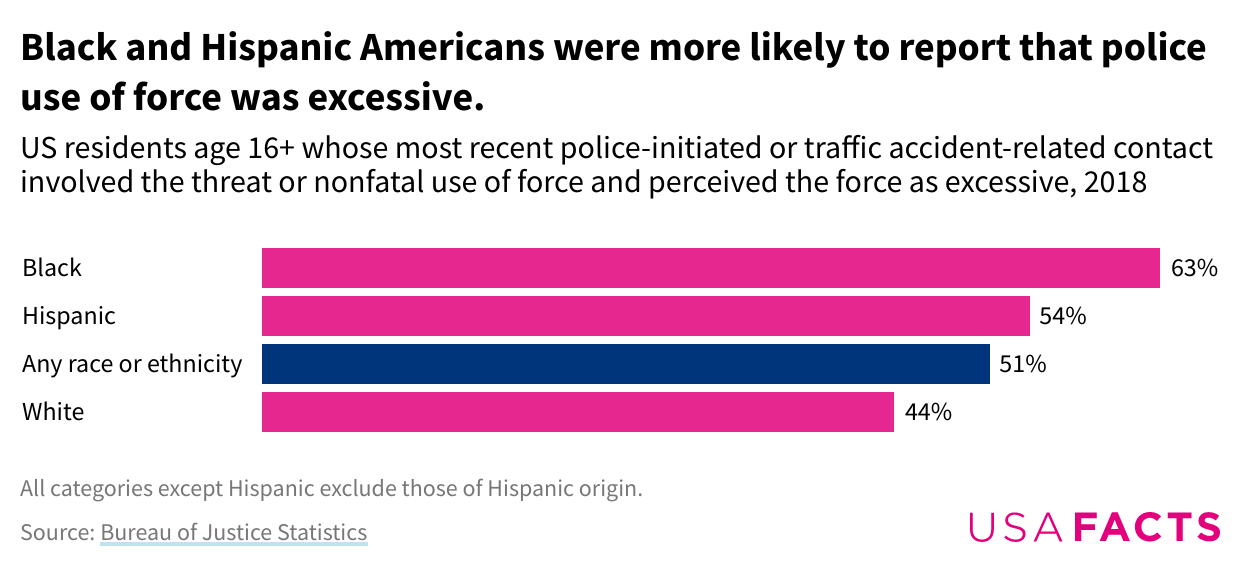Traffic stops are a routine occurrence in the United States, but what happens during those stops can vary significantly depending on the driver’s race.
According to a report from the Bureau of Justice Statistics (BJS), 6% of Black and Hispanic Americans pulled over for traffic stops were searched or arrested, the most of any other groups. Americans in “all other” racial categories were searched or arrested 4% of the time.
White Americans, at 40%, were the least likely to be ticketed, while Americans in “all other” racial categories were most likely to be ticketed, at 51%, followed by Hispanic Americans at 50% and Black Americans at 45%.
White Americans also received warnings at a higher rate (47%), followed by Hispanic Americans at 36%, Americans in all other categories at 35%, and Black Americans at 34%.
Black Americans were the most likely to receive no enforcement action, at 15%, followed by Americans in all other racial categories at 10%, white Americans at 9%, and Hispanic Americans at 8%.
What does the data say about use of force?
Americans’ experiences of police use of force also varied across races. Over half of Americans who experienced the threat or use of nonfatal force in 2018 reported excessive force, with Black Americans and Hispanic Americans reporting above-average rates of 63% and 54%, respectively.

Forty-four percent of white Americans reported excessive force, which was below the average. Data was not available for other racial or ethnic groups.
For a fuller picture of crime in the US, read about where guns used in crimes are bought, and get more USAFacts data in your inbox by subscribing to our weekly newsletter.
Keep exploring
Page sources and methodology
All of the data on the page was sourced directly from government agencies. The analysis and final review was performed by USAFacts.
Bureau of Justice Statistics
Contacts Between Police and the Public, 2020